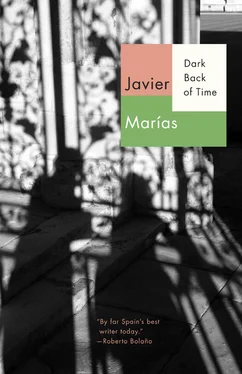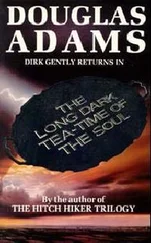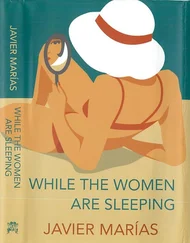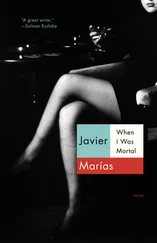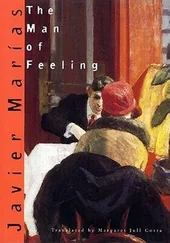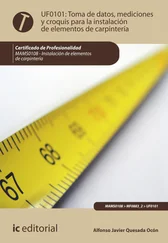“After Alan Marriott’s first visit, a year or more previously, I had included among the rare authors whose books I was seeking this John Gawsworth, unknown to me until then, whose name he had mentioned and noted down for me before saying goodbye, and for whom Machen had written a prologue. His work, as Alan Marriott himself had said, was very difficult to find.” I must point out here that this is the part of the novel that most closely coincides with my (and even with the only) reality and where I loaned my experiences and voice to the Spanish gentleman narrator; that is, I can vouch for almost everything he says and speaks of. Machen is Arthur Machen, the famous author of horror stories and novels of whose work Borges was so fond; like Ian Michael, Machen was Welsh. As for Alan Marriott, he never existed as he is described, but the person who first spoke to me of Gawsworth was Roger Dobson, or Roger Alan Dobson, which, he told me after having read the book, is his full name. He also noticed — a man attentive to coincidences, I hadn’t paid any attention — that Alan Marriott’s initials were the same as those of his idolized Arthur Machen. The narrator went on to say: “None of the scant body of work he produced is currently in print in England, but little by little, with patience and luck and the progressive sharpening of my predatory eye, I found one or another opuscule of his in my used book stores in Oxford and London, until, a few months later, I came upon a copy of his book Backwaters , from 1932, signed, moreover, by the author himself: ‘John Gawsworth, written aged 19 ½’ it said in pen as soon as it was opened. There was also a correction in his own hand on the first page of the text (he had added, after the name ‘Frankenstein,’ the word ‘monster,’ to make it clear that he was referring to the creature and not the creator). My curiosity was deepened by the sense of temporal vertigo or time negated that occurs when your hands are holding an object that doesn’t entirely silence its past, and after that moment I began a course of research that was quite fruitless for many months, so elusive and unknown was and is the figure of Terence Ian Fytton Armstrong, the real name of the person who was in the habit of signing his name as Gawsworth.” Soon he will no longer be as elusive, now that the Dictionary of National Biography has commissioned an article on the poet-king of Redonda from his reluctant successor and literary executor (the two offices always go together in this legend) Jon Wynne-Tyson, or King Juan II.
“Nevertheless,” the text continued, “although his work was no more than conventional and rare, which made its total neglect and the lack of any reprint quite understandable, as I went on ascertaining various facts (no book existed on Gawsworth, not even, it seemed, an article, and he barely received a mention in the most voluminous and exhaustive literary dictionaries and encyclopedias) my interest went on growing, not so much because of the rather average work as because of the far from average man. I first found out the dates of his birth and death—1912 and 1970—and then, on a page of mute bibliography, that several of his works had been published (sometimes under other pseudonyms, each more absurd than others) in places as extravagant and improbable for a London writer as Tunis, Cairo, Sétif (Algeria), Calcutta and Vasto (Italy). His poetical works were collected between 1943 and 1945 in six volumes — most of them printed in India — but, peculiarly, the fourth volume appears never to have been published, though it has a title ( Farewell to Youth ). It simply does not exist. His prose work, mostly short literary essays and tales of horror, is scattered across obscure, strange anthologies of the 1930s, or saw the light — a figure of speech — in private or limited editions.
“Yet Gawsworth had been quite a personality and promising literary figure in the 1930s. A tireless promoter of neo-Elizabethan poetic movements in reaction against Eliot, Auden and other innovators, he had, while still little more than a teenager, frequented and become friends with many of the most notable writers of the decade: he wrote about the work of the famous avant-gardist and painter Wyndham Lewis, and of the hugely famous T.E. Lawrence or Lawrence of Arabia; he was awarded literary honors and in his day was the youngest elected member of the Royal Society of Literature; he met Yeats as an old man and Hardy while he was dying; he was the protegé and later the protector of Machen, as well as of the famous sexologist Havelock Ellis, the three Powys brothers, and the then (and now again somewhat) famous novelist and short-story writer M. P. Shiel. I couldn’t dig up much more than that, until finally, in a dictionary specializing in the literature of horror and fantasy, I did: in 1947, at the death of his mentor Shiel, Gawsworth was named not only his literary executor but also heir to the kingdom of Redonda, a minuscule island in the Antilles of which, at the age of fifteen, Shiel himself (a native of the neighboring and much larger island of Montserrat) had been crowned king in a festive naval ceremony in 1880, at the express desire of the previous monarch, his father, a local Methodist preacher who was also a shipowner and had bought the island years before, though no one knows from whom, given that its only inhabitants at the time were the boobies that populated it and a dozen men who gathered the birds’ excrement to make guano.” I fear that at present only the boobies are left; and I later learned that the elder Shiel or Shiell, the preacher and shipowner, was not a monarch as I said: he only had his firstborn son crowned. “Gawsworth was never able to take possession of his kingdom because the British government — with whose Colonial Office both the two Shiels and he were eternally in dispute — attracted by the phosphate of alumina on the island, had decided to annex it in order to keep the United States from doing so. Nevertheless, Gawsworth signed some of his writings as Juan I, King of Redonda (king in exile, evidently), and made dukes or admirals of various writers who were his friends or whom he admired, among them his mentor Machen (whose title he simply confirmed), Dylan Thomas (Duke of Gweno), Henry Miller (Duke of Thuana), Rebecca West and Lawrence Durrell (Duke of Cervantes Pequeña). The entry in that dictionary, after not explaining any of this — I discovered it some time later — concluded: ‘Despite his wide circle of friends, Gawsworth became something of an anachronism. He lived his last years in Italy, returning to London to live on charity, sleeping on park benches and dying forgotten and penniless in a hospital.” I also later learned that there were a number of detective novelists among the peers of Redonda, such as Dorothy L. Sayers, Julian Symons and “Ellery Queen,” as well as some editors such as Gollancz, Knopf and Secker, and perhaps even a few artistes such as Dirk Bogarde and the exuberantly platinumesque Diana Dors.
“That this exalted man who could be king and who, one day in 1932, with unmistakable enthusiasm and juvenile pride had signed the copy of Backwaters now in my possession should have ended his life in this way inevitably made quite an impression on me — even more of an impression than the stories of the violinist Mollineux and the papal theologist Mew — though so many other writers and better men than he have met the same fate.” The violinist and theologian had both ended up, against all expectation, as beggars, and in Oxford you see a great many of those, the city is full of them, they make you think and make you fear, for yourself, too. “I couldn’t help wondering what must have happened in between , between his precocious and frenetic literary and social initiation and his anachronistic and tattered ending; what must have happened to him, perhaps during those residences and travels of his across half the world, always publishing, always writing, wherever he happened to find himself. Why Tunis, Cairo, Algeria, Calcutta, Italy? Was it because of the war? Because of some obscure and unrecorded diplomatic activity? And why did he publish nothing more after 1954—sixteen years before his wretched death — having previously managed to do so in places and at times when getting hold of a printing press must have been a heroic or suicidal feat? What had become of the — at least — two women to whom he had been married? Why, at the age of 58, this outcome as a useless old man, this death as an Oxford beggar?
Читать дальше
